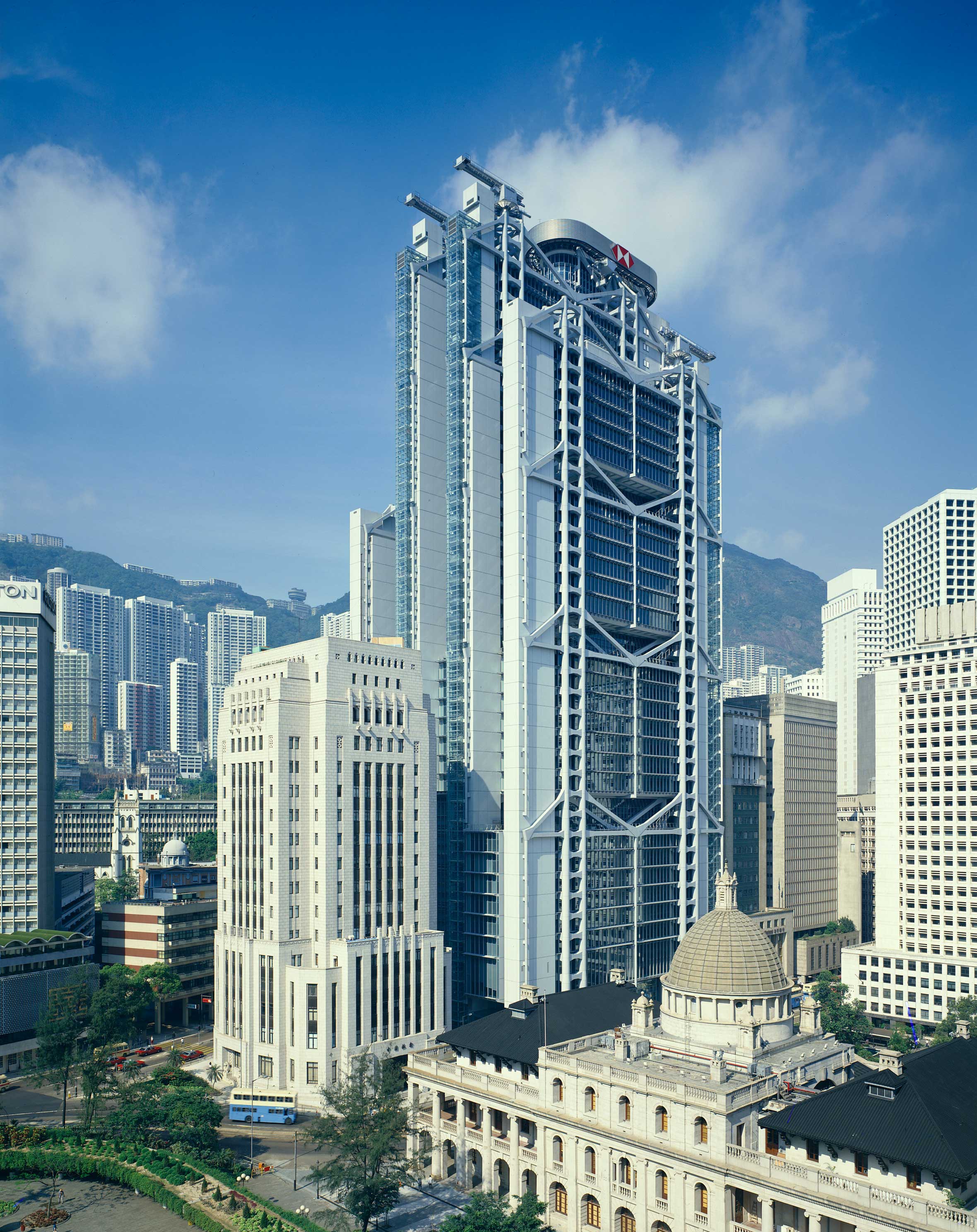High-tech architecture
'High-tech' is an architectural style that incorporates elements of the new high-tech industries and advanced construction techniques into building design. Also known as 'late modernism' or 'structural expressionism', it emerged in the 1970s as a response to a growing disillusionment with modern architecture that was felt to have produced monotonous, standardised structures.
High-tech often seen as being the link between modernism and postmodernism. Developed out of modernism, high-tech attached importance to the object itself rather than the object being a functional use of space. It aimed to achieve a new industrial aesthetic, inspired by technological progress and the computerisation of industry.
It sought to integrate the technical equipment of the building into its structure, marrying functionality with its aesthetics. This would be taken further by architects such as Richard Rogers on buildings such as Lloyds of London and the Centre Pompidou in a style that was sometimes referred to as 'bowellism', based on the idea that the greatest amount of free floor space could be maintained by externalising building services.
Some of the most well-known architects identified with the high-tech style are Norman Foster, Richard Rogers, Renzo Piano, Michael Hopkins, and Jean Nouvel.
Some of the most well-known examples of high-tech buildings are:
- City Hall, London.
- Bank of China Tower.
- Lloyds of London.
- Allianz Arena, Munich.
- Centre Pompidou.
- Beetham Tower, Manchester.
- Internationales Congress Centrum, Berlin.
- HSBC Headquarters, Hong Kong.
- Listing of Sainsbury's supermarket in Camden Town.
- Channel Four Television Headquarters.
- Schlumberger Research Laboratories, Cambridge.
- Renault parts distribution centre, Swindon.
- Grand Union Walk housing, London.
- TV-am building, Camden.
[edit] Related articles on Designing Buildings Wiki
- Architectural styles.
- Art Nouveau.
- Bank of China Tower.
- Blobitecture.
- Brutalism.
- Centre Pompidou.
- Concept architectural design.
- Constructivist architecture.
- Deconstructivism.
- Expressionist architecture.
- Fuji TV Building, Tokyo.
- Futurist architecture.
- International Style.
- Italian brutalism.
- Last Futures: Nature, Technology and the End of Architecture.
- Megastructure.
- Metabolism.
- Modernist architecture.
- Neo-futurism.
- Nicholas Grimshaw.
- Norman Foster.
- Parametricism.
- Postmodern architecture.
- Richard Rogers.
- Sage Gateshead.
- Speculative architecture.
[edit] External references
- MLJ - High-tech architecture
Featured articles and news
Homes England supports Greencore Homes
42 new build affordable sustainable homes in Oxfordshire.
Zero carbon social housing: unlocking brownfield potential
Seven ZEDpod strategies for brownfield housing success.
CIOB report; a blueprint for SDGs and the built environment
Pairing the Sustainable Development Goals with projects.
Types, tests, standards and fires relating to external cladding
Brief descriptions with an extensive list of fires for review.
Latest Build UK Building Safety Regime explainer published
Key elements in one short, now updated document.
UKGBC launch the UK Climate Resilience Roadmap
First guidance of its kind on direct climate impacts for the built environment and how it can adapt.
CLC Health, Safety and Wellbeing Strategy 2025
Launched by the Minister for Industry to look at fatalities on site, improving mental health and other issues.
One of the most impressive Victorian architects. Book review.
Common Assessment Standard now with building safety
New CAS update now includes mandatory building safety questions.
RTPI leader to become new CIOB Chief Executive Officer
Dr Victoria Hills MRTPI, FICE to take over after Caroline Gumble’s departure.
Social and affordable housing, a long term plan for delivery
The “Delivering a Decade of Renewal for Social and Affordable Housing” strategy sets out future path.
A change to adoptive architecture
Effects of global weather warming on architectural detailing, material choice and human interaction.
The proposed publicly owned and backed subsidiary of Homes England, to facilitate new homes.
How big is the problem and what can we do to mitigate the effects?
Overheating guidance and tools for building designers
A number of cool guides to help with the heat.
The UK's Modern Industrial Strategy: A 10 year plan
Previous consultation criticism, current key elements and general support with some persisting reservations.
Building Safety Regulator reforms
New roles, new staff and a new fast track service pave the way for a single construction regulator.























